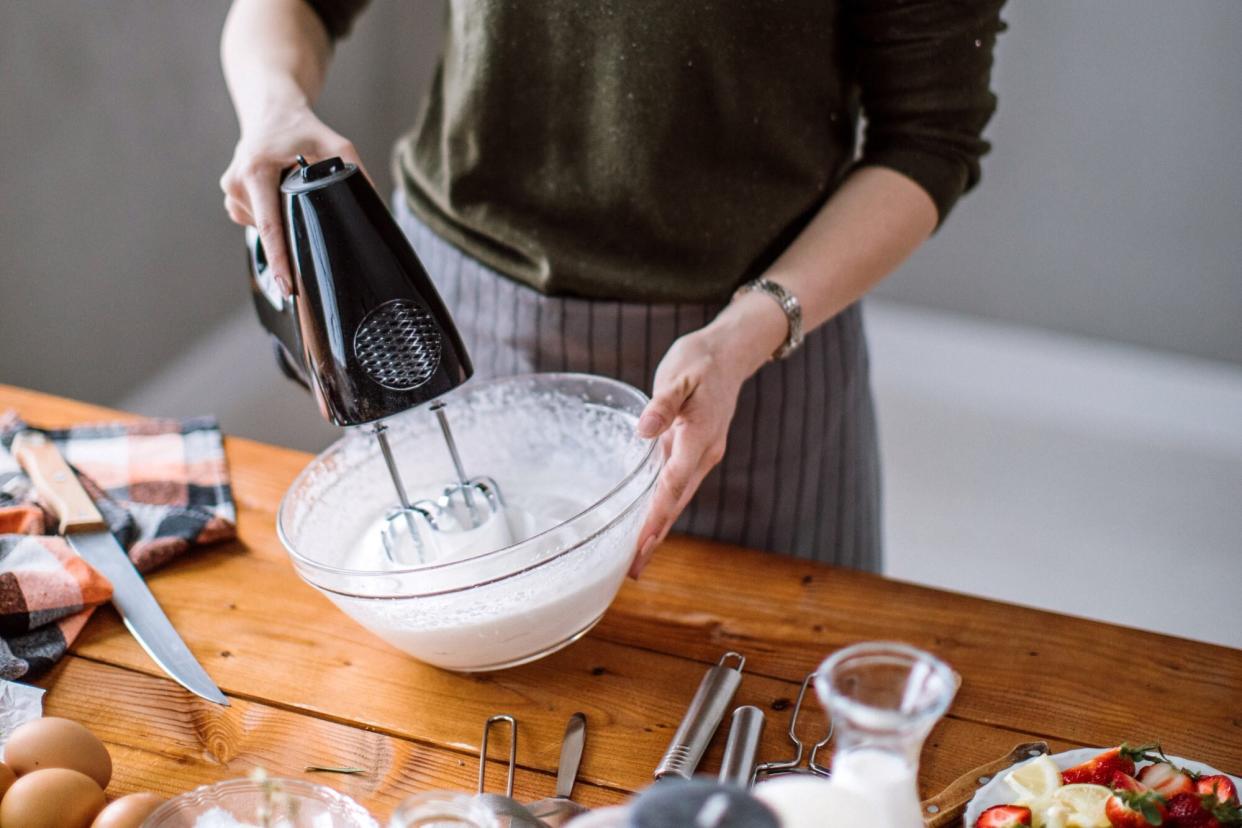Hand Mixer vs. Stand Mixer: Both Stand the Test of Time, but Which Is Best?

- Oops!Something went wrong.Please try again later.
Getty Images
The stand mixer is considered an indispensable item in any baker's tool kit. Perhaps most desirable of all is the iconic KitchenAid, a brand that launched in 1919, and whose design for the stand mixer has remained virtually unchanged since 1937. The pioneers at KitchenAid also invented the electric hand mixer, and these days it's hard to find a kitchen that doesn't have at least one, if not both, of these small appliances. As they serve similar functions, it can be hard to know when to use which, or if owning both is even necessary.
Related: Bake Like a Pro: Our Best Recipes for Brownies, Cheesecake, Pound Cake, and More
When the Hand Mixer Wins
There are pros and cons to using a hand mixer or a stand mixer. Size, portability and ease of use are huge checkmarks in the plus column for handheld mixers. Attachments are easily stored away in drawers, and being able to pull out the small appliance at any moment provides an incentive to prepare a recipe, both for the home baker and professional alike.
Food stylist and recipe developer Laura Rege hates lifting and storing her stand mixer. "I'm more of a hand mixer kind of baker," she says. "It's so easy, light, and does the same job just as well for almost any cookie, cake, or even whipped cream or meringues." But she concedes, "I suppose some people don't want to stand around and hold a hand mixer while creaming butter and sugar or something like that, but I like staying involved."
With a stand mixer, you need to use the bowl that comes with the mixer but hand mixers work with most bowls, are maneuverable enough to follow you anywhere you feel like baking, and a decent model will typically cost you less than $100.
When the Stand Mixer Wins
While generally hand mixers are interchangeable with countertop stand mixers, there is a slight caveat: Hand mixers don't have the versatility of stand mixers via their attachments. Perhaps the most coveted of all attachments is the dough hook. In fact, the KitchenAid stand mixer was originally invented by Herbert Johnston after he had observed bread bakers laboriously kneading dough and was inspired to find a better way.
Bread Dough
Kneading bread dough is a necessary step in developing gluten that gives bread its structure and characteristic chew. Sometimes this process requires 10 or more minutes of kneading, which is a serious workout that you might not necessarily be looking for. Stand mixers have strong motors to withstand the work that bread making can require, even hand mixer fan Rege admits she turns to her stand mixer when making bread dough.
When You're Multitasking
Another stand mixer benefit is that it doesn't require babysitting. With a hand mixer, you need to remain at the bowl holding the mixer, which means you stay aware of how your dough or batter is progressing. The stand mixer will keep working even if you leave its side.
For Longer Tasks
The stand mixer also aces culinary tasks that require longer beating, such as for Swiss Meringue, or when you need a strong motor for a big batch of dough or doubling a cookie recipe.
And Those Attachments
In addition to the dough hook, stand mixers today have a number of attachments that are useful for things far beyond mixing: pasta rollers for making your own lasagna sheets (even pasta cutters if you're more in the mood for tagliatelle), meat grinders and extruders for making sausage, special frozen mixing bowls for homemade ice cream, even grain mills for milling your own flour! So while a quality stand mixer costs $400 and up, the value it adds to your kitchen and the variety of dishes it can help you prepare justifies the price tag.
Personal Choice
Ultimately, in the great mixer debate, the question of which to own, or whether or not to own both, depends on you as a cook and baker. When it comes to stocking a kitchen with appliances, especially ones that are heavy and expensive, it's important to be honest with yourself about how much use you would get and what you would use it for. It's easy to be tempted by the rainbow of stand mixer colors offered, imagining how cute one would look on your countertop. But if you're not a bread baker, or aren't baking multiple batches of cookies at a time, remember that a hand mixer can hold its own (while you hold it!) for most mixing tasks, and at a fraction of the cost.

